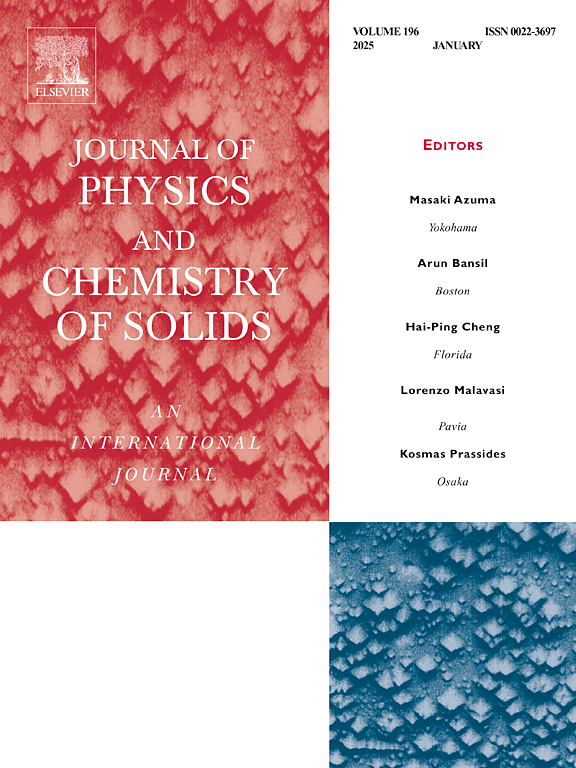Comprehensive analysis of p-nitro phenol p-amino benzoic acid monohydrate crystals: Structural, mechanical, linear and nonlinear optical properties
IF 4.3
3区 材料科学
Q2 CHEMISTRY, MULTIDISCIPLINARY
引用次数: 0
Abstract
Organic single crystals, with their exceptional nonlinear optical properties and highly tuneable characteristics, are increasingly recognized as promising materials for photonic and optoelectronic applications. In this study, p-nitro phenol p-amino benzoic acid monohydrate (PNPAB) single crystals were successfully grown using the slow evaporation solution technique. Methanol was utilized as the solvent, and the crystal growth process was carefully controlled at a constant temperature to promote uniformity and defect free formation. Crystal's lattice structure was unveiled through single crystal X-ray diffraction, and crystalline integrity meticulously examined with high-resolution X-ray diffraction. Spectral analysis using Fourier transform infrared techniques was conducted to determine presence of functional groups. UV–Vis analysis of PNPAB crystal showed an absorption edge at 406 nm with a band gap of 3.05 eV, while photoluminescence displayed emission at 435 nm upon 378 nm excitation, indicating potential for optoelectronic applications. Third-order nonlinear optical (TONLO) properties were explored using an ultrafast (40-fs) laser at 800 nm, employing both open and closed aperture Z-scan techniques. PNPAB is identified as a highly promising material for optical limiting applications due to its unique properties and effectiveness in managing excessive light levels.
求助全文
约1分钟内获得全文
求助全文
来源期刊
CiteScore
7.80
自引率
2.50%
发文量
605
审稿时长
40 days
期刊介绍:
The Journal of Physics and Chemistry of Solids is a well-established international medium for publication of archival research in condensed matter and materials sciences. Areas of interest broadly include experimental and theoretical research on electronic, magnetic, spectroscopic and structural properties as well as the statistical mechanics and thermodynamics of materials. The focus is on gaining physical and chemical insight into the properties and potential applications of condensed matter systems.
Within the broad scope of the journal, beyond regular contributions, the editors have identified submissions in the following areas of physics and chemistry of solids to be of special current interest to the journal:
Low-dimensional systems
Exotic states of quantum electron matter including topological phases
Energy conversion and storage
Interfaces, nanoparticles and catalysts.

 求助内容:
求助内容: 应助结果提醒方式:
应助结果提醒方式:


